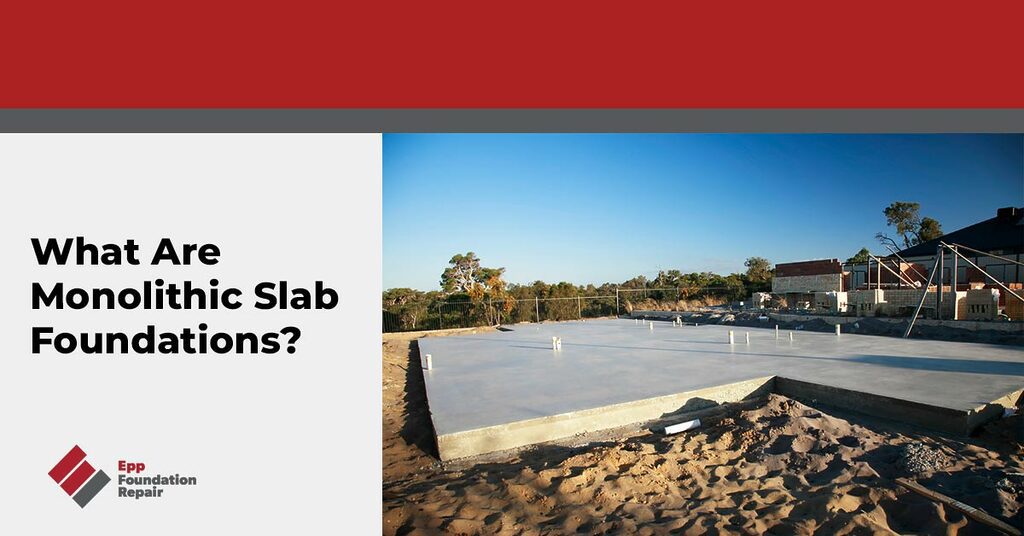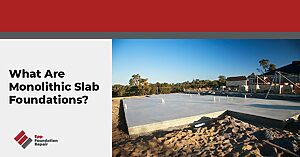What Is a Slab Foundation?
A slab foundation is made by pouring a layer of concrete on top of the ground. Slab foundations are usually around 6 inches thick and contain steel for reinforcement. Slab foundations are popular today in regions where the climate is mild because they cost less than putting in a basement or crawl space. Slab foundations provide good insulation since the thick layer of concrete helps prevent heat gain or loss.
For more information, check out our blog about – Slab foundation vs crawl space.
Two Types of Slab Foundations: Monolithic and Stem Wall
There are two types of slab foundations: monolithic and stem wall.
Monolithic Slab Foundations
A monolithic slab foundation is made in one continuous pour, and the edges of the foundation are thicker (12-24 inches, depending on the design) and have more steel reinforcement than the center. Homeowners like monolithic slab foundations because they’re relatively simple, quick, and cost-effective to construct.
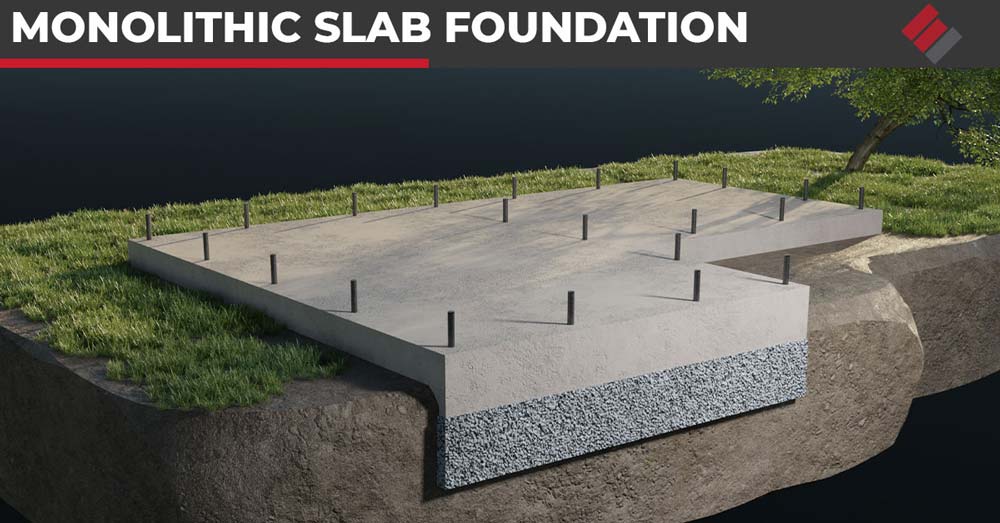
Pros of monolithic slab foundations
Monolithic slab foundations have several pros, including the following:
- They’re a cost-effective option because they require less material and labor to construct. This makes them popular for homeowners looking for an affordable and reliable foundation.
- Monolithic slab foundations are also highly durable and resistant to wear and tear, making them an excellent long-term investment.
- They can withstand natural disasters such as earthquakes, making them an excellent choice for seismically active areas.
- The concrete also allows for high energy efficiency, as the thick slab retains heat better than other types of foundations. This means homeowners can probably save on heating costs in the long run.
- Finally, a monolithic slab foundation requires little to no maintenance, making it a stress-free option for homeowners. It’s also easier to install plumbing and electrical systems, as the concrete foundation provides an excellent base for these.
The cons of monolithic slab foundations
While monolithic slab foundations are very popular, they have downsides. These include the following:
- One of the most significant negatives is the steep cost of repairs that arise if plumbing or electrical issues surface later on. Since utilities are buried inside the slab, any repairs can demand breaking up the slab. Putting things back together again after the repair is complete can be an expensive hassle.
- Monolithic slab foundations are suitable for smaller structures only. Larger buildings need more extensive foundations to provide the necessary support and stability. A monolithic slab foundation won’t cut it in such cases, leading to potential structural problems.
- Because monolithic slab foundations sit close to the ground, they may not prevent water intrusion.
- Monolithic slab foundations are also vulnerable to cracking when situated on expansive soil. Similarly, frost heave in cold climates can cause the ground to contract and expand, creating stress on the slab, which can cause it to crack. This is why slab foundations are not common in colder regions.
Stem Wall Foundations
A stem wall foundation is a reinforced concrete wall placed on top of a concrete footing. The wall extends above ground level and serves as a structural support for the building’s walls. The area under the wall is filled with compacted soil.
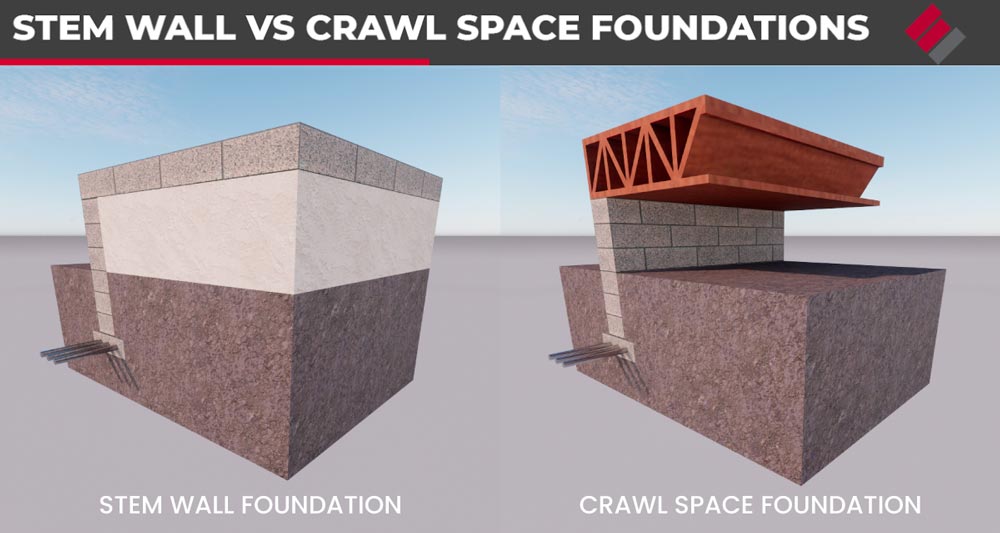
Stem wall foundations are particularly useful in areas with high water tables or flood-prone regions because the walls help to keep water out of the building. Stem walls can also create a crawl space beneath the building that can be used for storage or additional access to utilities.
Are Monolithic Slab Foundations Better Than Stem Wall Foundations?
Several factors come into play when it comes to the choice between monolithic slab and stem wall foundations. While both types of foundations serve the same purpose of forming the base of a building, they differ in their construction and properties.
A monolithic slab foundation is a single, solid layer of concrete poured in one go and allowed to cure. In contrast, a stem wall foundation comprises a concrete base and raised walls, typically made of concrete blocks or poured concrete. The stem wall supports the weight of the building and spreads it over a larger area.
One advantage of a monolithic slab foundation is its simplicity and cost-effectiveness. Since there are no foundation walls to build, construction is typically faster and requires fewer materials and labor. Moreover, a monolithic slab foundation can provide a continuous, level surface for the entire building, making it ideal for structures with large, open floor plans.
However, monolithic slab foundations have some drawbacks, as noted above. They may be more susceptible to shifting and settling over time since they lack the raised walls of a stem wall foundation. This can cause cracks in the concrete, compromising the foundation’s integrity and potentially leading to structural problems.
On the other hand, stem wall foundations provide greater stability and protection against shifting or settling. The raised walls of the foundation also provide a waterproof barrier, helping to prevent moisture from seeping into the building’s interior.
Ultimately, the choice between monolithic slab and stem wall foundations will depend on several factors, including the size and complexity of the building, the cost of construction, and the geological conditions of the building site. In other words, a monolithic slab foundation might be better than a stem wall foundation in some conditions but not others. It’s all about the best foundation for your needs.
Foundation Repair Options for Monolithic Slab Foundations
Monolithic slab foundations, like all foundations, can settle into the ground unevenly. This is referred to as differential settlement. Differential settlement places a lot of stress on a foundation and, if it isn’t repaired, can cause severe structural damage.
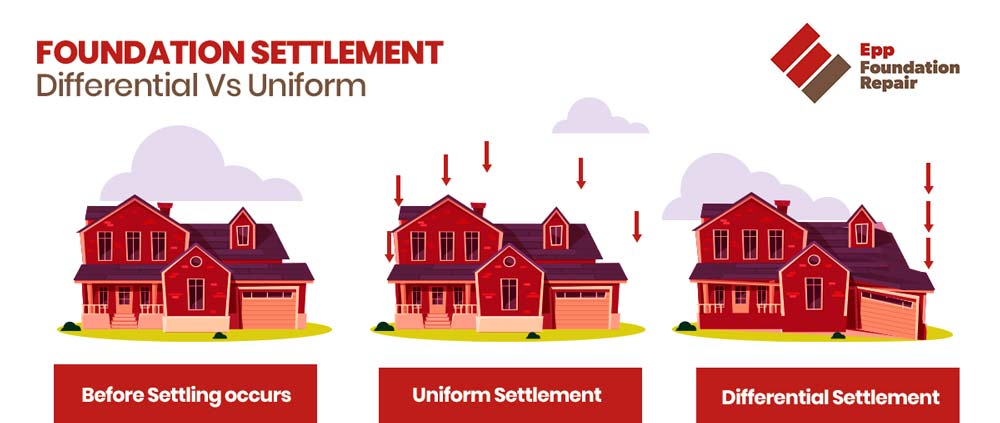
Fortunately, there are ways to repair differential settlement. The most common repair solution is underpinning using push, helical, slab, or drilled concrete piers. The piers are installed beneath the foundation to support and stabilize it.
The installation process for push and helical piers involves excavating a small area around the foundation, attaching steel brackets to the footing, and driving the piers into deeper, more stable soil. Once installed, the piers transfer the weight of the foundation to a more stable soil layer, preventing further settlement.
For more detailed information about foundation underpinning, see What is Underpinning?
If you’re concerned your home might have a foundation problem, contact us today to schedule an evaluation and receive a repair estimate. We serve areas in four states: Nebraska, Iowa, Kansas, and Missouri.

